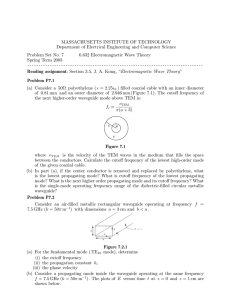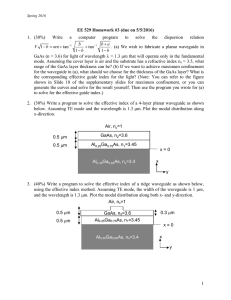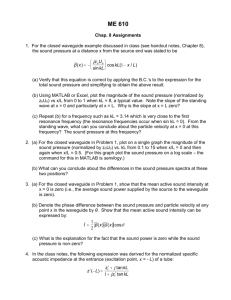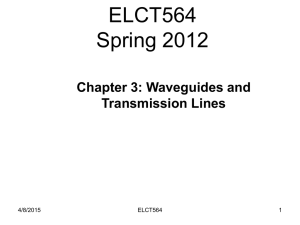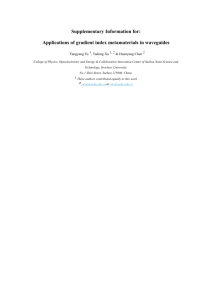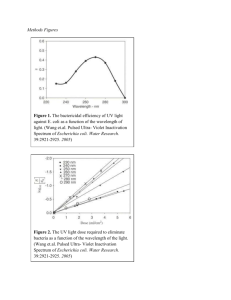Membershiplist of Joint Task Force TEM Waveguide
advertisement
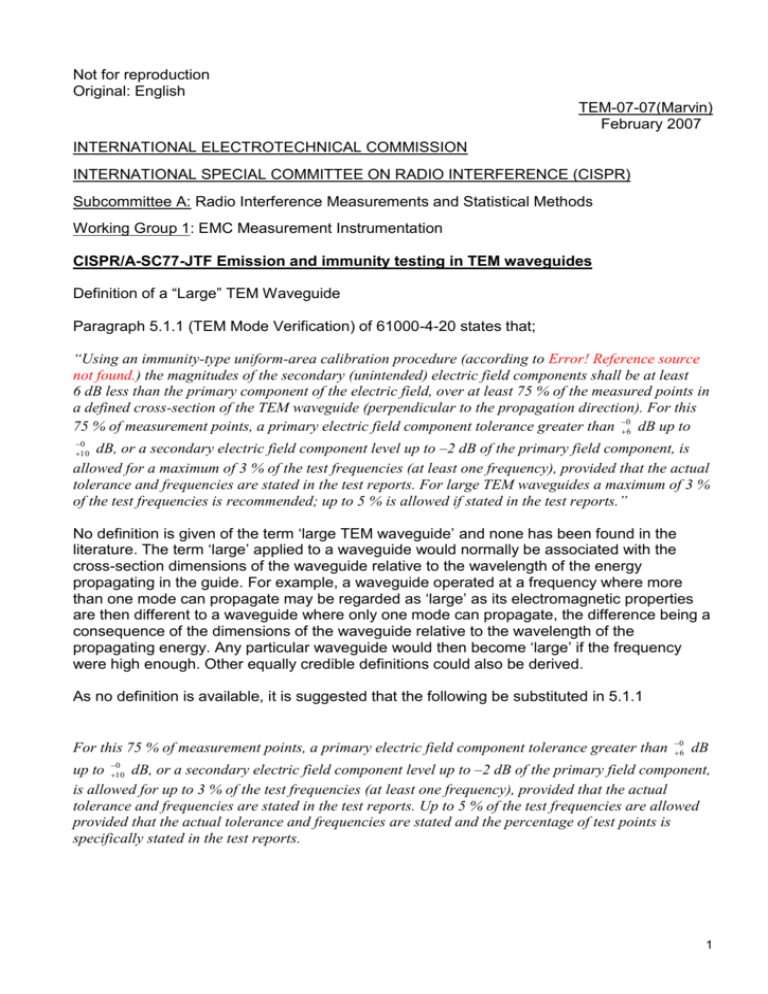
Not for reproduction Original: English TEM-07-07(Marvin) February 2007 INTERNATIONAL ELECTROTECHNICAL COMMISSION INTERNATIONAL SPECIAL COMMITTEE ON RADIO INTERFERENCE (CISPR) Subcommittee A: Radio Interference Measurements and Statistical Methods Working Group 1: EMC Measurement Instrumentation CISPR/A-SC77-JTF Emission and immunity testing in TEM waveguides Definition of a “Large” TEM Waveguide Paragraph 5.1.1 (TEM Mode Verification) of 61000-4-20 states that; “Using an immunity-type uniform-area calibration procedure (according to Error! Reference source not found.) the magnitudes of the secondary (unintended) electric field components shall be at least 6 dB less than the primary component of the electric field, over at least 75 % of the measured points in a defined cross-section of the TEM waveguide (perpendicular to the propagation direction). For this 75 % of measurement points, a primary electric field component tolerance greater than 06 dB up to 0 10 dB, or a secondary electric field component level up to –2 dB of the primary field component, is allowed for a maximum of 3 % of the test frequencies (at least one frequency), provided that the actual tolerance and frequencies are stated in the test reports. For large TEM waveguides a maximum of 3 % of the test frequencies is recommended; up to 5 % is allowed if stated in the test reports.” No definition is given of the term ‘large TEM waveguide’ and none has been found in the literature. The term ‘large’ applied to a waveguide would normally be associated with the cross-section dimensions of the waveguide relative to the wavelength of the energy propagating in the guide. For example, a waveguide operated at a frequency where more than one mode can propagate may be regarded as ‘large’ as its electromagnetic properties are then different to a waveguide where only one mode can propagate, the difference being a consequence of the dimensions of the waveguide relative to the wavelength of the propagating energy. Any particular waveguide would then become ‘large’ if the frequency were high enough. Other equally credible definitions could also be derived. As no definition is available, it is suggested that the following be substituted in 5.1.1 For this 75 % of measurement points, a primary electric field component tolerance greater than 0 6 dB 0 10 up to dB, or a secondary electric field component level up to –2 dB of the primary field component, is allowed for up to 3 % of the test frequencies (at least one frequency), provided that the actual tolerance and frequencies are stated in the test reports. Up to 5 % of the test frequencies are allowed provided that the actual tolerance and frequencies are stated and the percentage of test points is specifically stated in the test reports. 1

